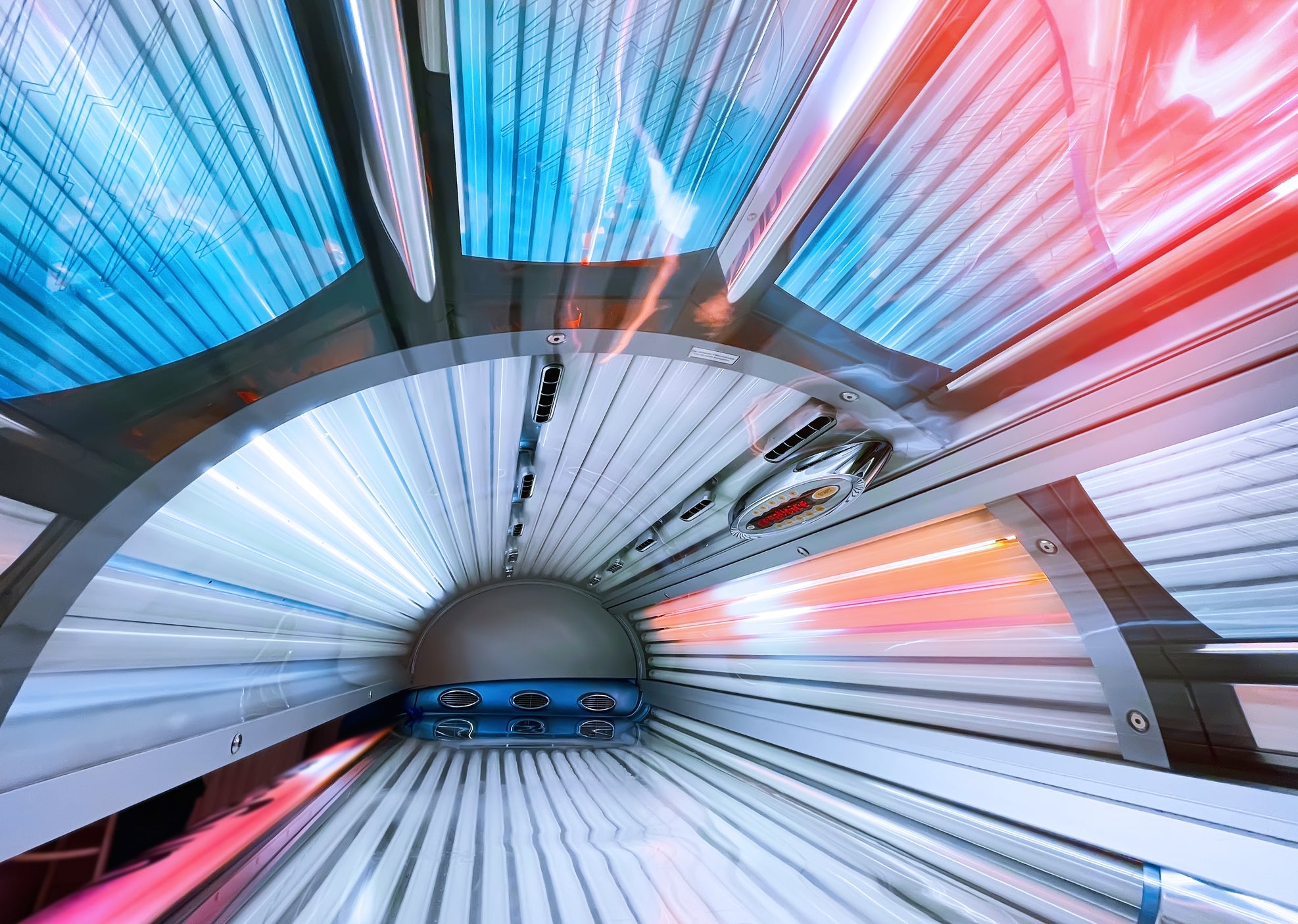Have you heard about Red Light Therapy (RLT)? This innovative technique has gained popularity in recent years due to its many potential benefits. However, some people may be hesitant to try it out because they confuse it with tanning. It's time to clear up that confusion and explain why RLT is not equivalent to tanning.
First and foremost, the wavelengths used in Red Light Therapy are not the same as those used in tanning. Tanning lamps emit UV radiation, which is known to cause skin damage, including burning and an increased risk of skin cancer. Red Light Therapy, on the other hand, uses wavelengths of light that are outside of the UV spectrum, part of the visible light range, and are therefore harmless to the skin.
[Wavelengths: UVB 280-320nm, UVA 320-400nm, Visible light: 400-750nm]
While it is true that tanning can give you a sun-kissed look, it requires bulky equipment that is not easy to have at home. Tanning beds and booths require special bulbs, reflectors, and filters that emit the UV radiation needed to tan the skin. Plus, you need to take safety precautions to avoid overexposure to UV radiation, which can lead to sunburn, premature aging, and skin cancer.
In contrast, effective RLT devices can be small and portable, making it easy to use them in the comfort of your own home. There are even handheld devices available that allow you to target specific areas of the body. Best of all, you don't have to worry about harmful UV radiation or take any special precautions.
It's also worth noting that while both tanning and Red Light Therapy can help people look and feel good, RLT offers additional benefits. The wavelengths used in RLT have been shown to stimulate the production of collagen and elastin, two proteins that are essential for healthy, youthful-looking skin. RLT can also help reduce inflammation, improve circulation, and relieve pain.
In fact, studies have shown that RLT can be an effective treatment for a variety of conditions. For example, it has been shown to improve symptoms of acne, eczema, psoriasis, and rosacea. It can also help reduce the appearance of fine lines and wrinkles, improve the texture and tone of the skin, and even help with hair growth.
One of the most exciting applications of RLT is its potential to improve athletic performance and aid in muscle recovery. RLT has been shown to increase blood flow, reduce inflammation, and enhance the production of ATP, which is the energy currency of the body's cells. This can help athletes perform better and recover faster after intense workouts.
So, if you're still on the fence about whether to try Red Light Therapy, remember that it is not the same as tanning. The wavelengths used in RLT are harmless to the skin and offer a host of potential benefits. Plus, RLT devices are small, portable, and easy to use at home. Whether you're looking to improve your skin's appearance, reduce inflammation and pain, or enhance your athletic performance, RLT may be worth considering.
In conclusion, Red Light Therapy is a safe and effective way to improve your skin's appearance and overall health. Unlike tanning, RLT does not expose you to harmful UV radiation, and it is easy to use at home with portable devices. Plus, RLT offers a variety of potential benefits, including reducing inflammation, improving circulation, and aiding in muscle recovery. So why not give RLT a try and see how it can benefit you?
Disclaimer:
This blog is for educational and entertainment purposes only. It is not intended to be used for medical diagnosis, treatment or prevention of any disease, illness or health issue.


